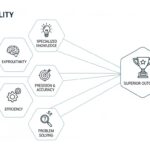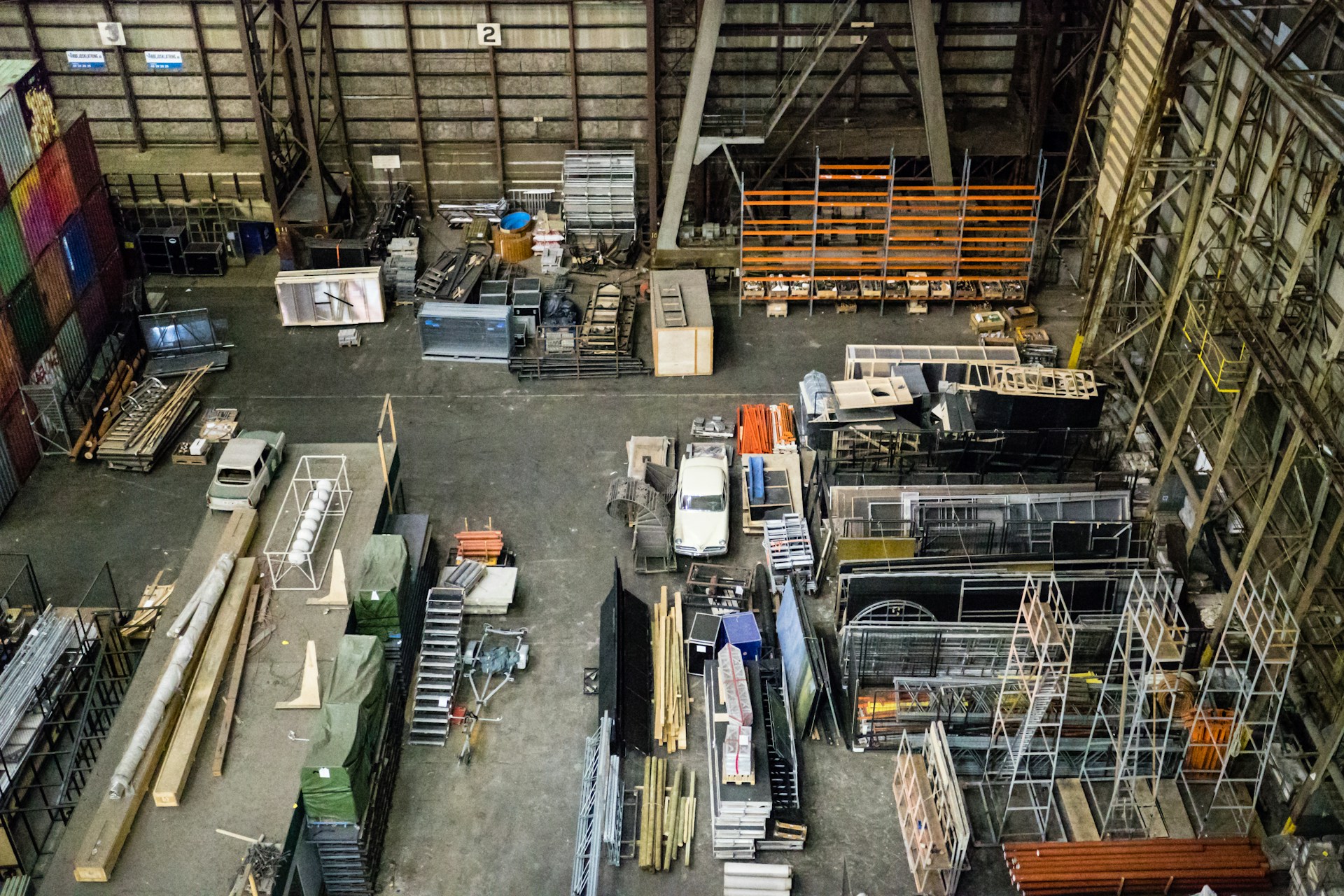I came across your work on Instagram and quickly became obsessed, not only by the quality of your work but also by what you actually say about your work. You’re very candid about your experience and show all the nitty-gritty truths about being a human who makes art. For us #artistsoninstagram who might be a little reserved about showing the uglier albeit more truthful part of the art-making process, what beads of wisdom would you offer about telling your story, warts and all?
Beads of wisdom? Well, when posting on Instagram, I go by these rules:
1. If it scares the shit out of me to post something, I’m probably doing it right.
2. Have fun; post with love.
I think all I’m really trying to do with my art is be ok with how human I am, blunders, warts, shortcomings, trauma, bad morning breath and all.
Your work is very empowered and confronts head on some very complex issues in a playful, yet profound way. How do you formulate and work out the way you decide to visualize this interaction? What is that process like?
I first start by throwing all seriousness out the window. I’m just painting a picture; it’s not that important. After I do this, that’s when I start getting ideas. Most of the time, how it happens is I will get an intact and complete visual idea in my head, and then my job is to paint it. I don’t ask questions; I don’t analyze it, and I certainly don’t criticize it until the idea is about 75% on the canvas. Then I can start to see what I was trying to say. I start to see what I was feeling when I painted the picture. Sometimes my ideas make me laugh; sometimes they bring me relief; and other times I look back at paintings I’ve created and I cry because I see how much pain I needed to work out on the canvas.
Who are the subjects in your paintings? How do you interact with them personally?
I sometimes paint figures from my head, or I’ll create composite images and work from those. Other times I will use my own body or I will get models to pose for me. I like to keep my process ever-changing because I don’t want to get too good at painting the figure. I want it to stay exciting for me. That’s why I don’t restrict myself to any one way of processing out the figures in my paintings.
However, when I do work with models, I have them sign a model release that gives me license to use their bodies in my work in ways that best serve the concepts with which I’m working. Most of them are cool with giving me total creative control. For example, I recently painted my friend’s husband who literally let me stab him in the back (the painting; not him) because I was trying to work out some real anger I had inside of me and I needed a cathartic release. You know, like when you’re a kid and the loving adult figures in your life tell you to go punch a pillow? My models know I might turn them into a pillow, and they’re ok with it, and I love them for it.
You have a very distinctive visual language that pulls figural styles from the old masters and casts them into contemporary contexts in a way that completely revitalizes the art form. When do you feel this really came together for you? Who are your biggest influencers both traditional and contemporary?
Well, thankie kindly.
My biggest influencers are those who keep saying that painting is dead. They are hilarious. I prove them wrong every day. It’s delightful. My head demons also influence me. When I’m painting, little scritchy scratchy thoughts come in and say things like, “Uh oh, Dorielle. It’s me, Anxiety. Anyway, I need to tell you something: this painting is going to be like really bad. This is because you’re lazy and also you are bad. And because of this, you will amount to nothing. That’s ZERO. Also, let’s talk about homelessness…” etc. I don’t know where we get those funny freaked out little monster voices from, but I do enjoy telling them to kindly wait on my couch while I finish what I am doing and then we can have a sincere chat when I’m out walking along the Rio Grande River under the influence of endorphins and natural beauty…preferably, after I’ve had some solid food.
BUT if we want to talk about artistic influencers in my work, I love ALL art. I love Andres Serrano’s “Blood and Semen,” I love Botticelli, I love Banksy, I love Jenny Morgan, Korehiko Hino, Chris Burden, Meret Oppenheim, Mary Cassatt, Sutton Beres Culler. And at the same time, I also don’t care for art at all. Sometimes I hate all art. Sometimes I get so fed up and grossed out with art that I want to throw up. But when it comes down to it, I always come back to loving all the art and the artists because they are usually stubborn as hell and they are doing what they want to do. This helps me know that I can also be stubborn and do what I want to do. And that’s the beautiful dance of inspiration.
Your paintings mix together fun, glittery textures, bright colors and gradients, gold leaf, big geometric and cartoony shapes, tightly rendered figures, and so on. What are your favorite parts to paint or experiment with?
I love to paint the surprises. Painting the figure representationally has kind of lost its fun for me. I am not a human copying machine. I get bored very easily if I don’t switch things up. Every painting must have something in it that is new to me and that somewhat scares me. I think one of the biggest and deadliest plagues in a creative life is when an artist finds something that he or she is good at, that’s received with praise and approval, and then they keep making the same work repeatedly. I call this bizarre behavior finding a niche, and, though comfortable and safe at first, it has the potential to kill you dead inside. It is my belief that artists are not commodities; we are seekers of truth and authentic expression and EVERYTHING in this world is our toolbox from which to pull. In my opinion, niche has no place in the world of creation because it, by definition, rules out exploration, which is the key to creating. The closest friend I have when I am painting is the curiosity to discover that which I do not yet know.
You often hear the word ‘feminist’ to describe artwork made by women about women. It’s a very specific word with a socio-political weight to it and its meaning changes over time based on its historical context. What does that word mean to you / What do you think it should mean? How do you respond to it when someone describes your work as such?
I love what Feminism stands for but I hate the word “Feminism.” I’ve written whole argumentative essays on this word. It’s tired, it’s ironic, and it’s becoming a groupthink-oriented fallacy. The very etymology of the word isolates women and points to gender as primary, and consequently, human as secondary. It also ties men to their gender and creates divide. And finally, it creates an absence of the masculine, which creates problems when you’re trying to have open interdependent communication about gender.
Also, Feminism has split into SO MANY factions; there’s even a Lipstick Feminist sect. It meant well upon conception, but mostly it has stuck around doing what our foremothers did not want it to do, which is namely labeling women as this or that. We need a new way to talk about gender, and personally, I think the best way to do it is to stop pointing at women as a group with a word that keeps using gender as the first defining attribute.
I would now like to take a moment to remind people that I have a spinal column and a brain. Sometimes this brain gets depressed and it wonders what the point of it all is. Sometimes my stomach gets hungry, and my vagina doesn’t care. I also have big teeth. One time, I stole candy from the grocery store. Yesterday, I checked the mail. My point is most of my experiences have nothing to do with the fact that I am a woman. I don’t care to be labeled by my genitalia or by the fact that I can create another human inside of me. Mostly I would just like for people to know how much I love anchovies.
In all seriousness, Feminism has become the greatest irony of our time because it is now holding women back who want to move beyond gender. It’s also ironic because it keeps cognitively implying that women are/should be singularly “WOMAN.” And well, we just don’t know what that means besides the fact that we are capable of making babies. The rest of it is gender-based preconceptions about behavior, and frankly, most of them make absolutely no sense and do not inform the unique and authentic nature of the individual.
Feminism started out as a way for women to be able to vote and own land. But if you look at how it’s evolved, it’s become a self-fulfilling prophesy and it looks like a dog chasing its own tail. For more about my thoughts on this beaten-to-a-pulp topic, please visit my website, dorielle.com, go to my blog, and read my essay on My Beef with Feminism.
I too have beef with Feminism. When it comes to art, it seems to have become another bucket for art by women about women blah blah blah. Do you ever feel compelled to push back when someone places your work in that category? A gallery, a publication, or some other powers that be?
I knew that when I started painting women exclusively, that I would have to hone in on a greater conversation about what it is to be female. That’s why I took a
more psychological approach and applied my own experiences to my work. After a while, I started to feel weird about working so one-sidedly. It made me feel like I was holding myself down in a strictly feminine experience, and I wanted to painting my experiences as a human….not just as a women. That way, I could explore my humanity and not just my gender.
That said, I am very much looking forward to moving out of the “she paints women” category.
Can you talk about your recent painting “Forgiving the Men We Mistook for Wish Granters” in terms of both meaning and process?
I painted “Forgiving The Men We Mistook for Wish Granters” after three traumatic things happened in my life. These occurrences are still very recent, so I don’t really want to talk about them in great detail yet. I will say that there were a few men in my life of whom I had profound expectations, to which they could not live up. When I managed to get a bit past the hurt, I finally saw them as flawed human beings just like me, and that helped me forgive them. They were never my wish-granters, they were just my well-wishers. Ultimately, it was I who had to make my wishes come true. I think a lot of people hold anger towards one another because they feel so much pain and loss due to the actions of others. If we don’t work through the anger, we can get sick inside. Suppressing pain and grief wreaks havoc on a person and it can turn into deep depression, rage, jealousy, and chronic illness.
When it comes to the ways men and women relate to one another, I imagine they are no different than any two people relating to one another, bumping awkwardly against each other, making mistakes, reacting to one another, attempting to understand the other with the best of intentions, etc. This first painting of a man was a deep release of anger by stabbing the canvas with a knife. In allowing myself to admit how hurt and angry I was, I could get a taste of forgiveness…which is letting go of the anger because I let myself feel it. Finding healing through my work is the greatest gift my art gives me.
Forgiveness is a recurring theme in both your paintings and your blog posts. You talk about women forgiving themselves for the slights that society places upon them as well as forgiving those who reinforce them. But forgiving is often very difficult to do. You describe your process as cathartic, does that mean painting is a tactic for finding for such forgiveness, both for yourself and for others?
You can’t force forgiveness. It must come naturally through letting yourself feel your authentic emotions. Anger, rage, sadness, fear, and grief all have shelf lives, and they are all gifts. They are essential parts of human experience, and they will pass, but holding onto or suppressing them for too long renders them chronically negative influences in our lives. However, that said, you cannot rush how long one of these emotions is going to stay with you. Alanis Morissette talks at great length about forgiveness. In one of her interviews, she said that forcing the process of forgiveness before you’re ready is a kind of violent thing to do to yourself. It’s like forcing yourself to laugh when you don’t find something funny. The problem is that we don’t want to feel grief, pain, loss, rage, anger, sadness because they can be profoundly uncomfortable, so what we do is label these feelings as bad. Then when we feel them, we feel that we are bad.
Eventually this avoidance creates panic in an individual. All the negative things we’ve been running from pile up like homework we’ve avoided for years. After my trauma, my anger, rage, grief, loss, sadness, etc. consumed me and I resisted it. This resistance turned my life into one huge post-traumatic stress episode. I was shaking all the time. I couldn’t eat, and food didn’t taste good either. I became severely depressed and scared. I couldn’t enjoy music, running or anything I used to enjoy. And I could not love and forgive myself because I essentially felt that everything that was “myself” was bad. I mean, I was denying my authentic human experience at every turn, running from it.
It’s very important for me to name what I am feeling instead of taking it out on the canvas. If I am feeling discouraged, I am probably tired, hungry, sad, or lonely. Very few times is my work bad; it’s just not finished or I am in a bad mood.When I get to the point of feeling discouraged, overwhelmed, and/or angry, I know I am not putting my best energy into my work. At that point, I know that I need to put the brushes down, and applaud myself for whatever I’ve done, whether it’s an hour or 7 hours of work. I was hospitalized from pushing myself too hard a couple years ago and I realized that if I want to do this for the rest of my life, I should be kind to my mind and body and I need to pace myself.On a more personal level, you have dealt with debilitating pain that pretty much put a stop to painting for you. If you feel comfortable talking about that experience, can you elaborate on how that affected you as an artist, or just a human who got thrown an unwieldy curveball?
I think I can talk about it now. When I was 28, my upper back completely stopped holding my head and neck up, and my liver was overtaxed and not functioning very well. I was yellow and cold all the time. I was experiencing tingling and numbness in my arms, and I would pass out or have panic attacks from the pain. I was bed-ridden on and off for approximately 8 months, during which time, my husband and I were facing unemployment and destitution in Oakland. I managed to get some painting in, but by the end of my time in Oakland, I was taken in an ambulance to the ER because I was losing consciousness in our kitchen and I thought I was going into a systemic shock. I managed to get a flight home to my mom’s house in New Mexico, but things in my life fell apart thereafter. I became catatonically depressed (my doctors called it Chronic Situational Depression). Though my body healed with no definitive diagnosis, my soul felt scared at best; shattered and lost at worst. I was a shell of who I used to be. I didn’t understand what the point of anything was. Somehow, I kept painting through it all. “Unrequited Lightning” is a painting I did when I got home that talks specifically to that time in my life. In that painting, the woman’s hair is spread out, the way it was on my pillow all day every day (although in the painting, she looks like she is getting electrocuted…sometimes it felt that way). The black lightning entering her head represented the painting ideas that would come to me, and the colored lightning leaving her head were the ideas that left me for someone else because I couldn’t do anything about them.
Slowly I’ve been healing everything that was affected by the trauma held to my experience in the last few years of my life. That said, I am just a human who got thrown an unwieldy curveball, but because of it, I have an amazing collection of impact strategies for the next curveball in my life.
A lot of us forget to take care of our bodies and eventually pay the price. What strategies have you developed for keeping the balance between work, life stuff, painting, and all the in between things?
It’s very simple: I listen to my body; of course, this is actually more complicated than it seems because when people get into the creative work zone, it’s easy to forget that you have a body; you forget to pee; you forget to eat; heck! It’s no wonder we artists have a reputation for being mentally unstable. But if I am going to do this for my whole life, I have to take care of myself. If I am painting and a muscle starts screaming at me, then I know it’s time to go stretch and take an epsom salt bath.
As far as preventative measures go, I’ve found that doing yoga is the most helpful. In fact, as soon as I let my yoga practice slip into arrogant busy-ness, I get myself right up shit creek. I also eat as healthy as possible and I don’t smoke cigarettes (because I need my liver and lungs to stay as healthy as possible). I’m always exploring different healing modalities like Ayurveda, acupuncture, and something that saved my life: muscle kinesiology. When I am painting, I set a timer to go off every 30 minutes or so to stretch. I also lift weights to keep my body strong.
I’m still working on balancing my “life stuff.” I have the tendency to work myself into a frenzy and then think that the world is coming to an end, when, really, I just need a sandwich and a bath.
What are you working on now? What are you looking forward to? Feel free to plug your next exhibition or project here 😉
I am currently working on a painting that’s as big as a queen size bed; it’s the largest painting I’ve ever done. And I am loving it! I am looking forward to all the positive things that are coming my way, which are unrevealed to me at this time. I am hoping for an exhibition in New York City this or next year. I have a few galleries and spaces in mind. Stay tuned.










